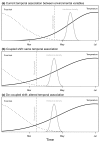Phenological plasticity is a poor predictor of subalpine plant population performance following experimental climate change
- PMID: 32001946
- PMCID: PMC6992428
- DOI: 10.1111/oik.06667
Phenological plasticity is a poor predictor of subalpine plant population performance following experimental climate change
Abstract
Phenological shifts, changes in the seasonal timing of life cycle events, are among the best documented responses of species to climate change. However, the consequences of these phenological shifts for population dynamics remain unclear. Population growth could be enhanced if species that advance their phenology benefit from longer growing seasons and gain a pre-emptive advantage in resource competition. However, it might also be reduced if phenological advances increase exposure to stresses, such as herbivores and, in colder climates, harsh abiotic conditions early in the growing season. We exposed subalpine grasslands to ~ 3 K of warming by transplanting intact turfs from 2000 m to 1400 m elevation in the eastern Swiss Alps, with turfs transplanted within the 2000 m site acting as a control. In the first growing season after transplantation, we recorded species' flowering phenology at both elevations. We also measured species' cover change for three consecutive years as a measure of plant performance. We used models to estimate species' phenological plasticity (the response of flowering time to the change in climate) and analysed its relationship with cover changes following climate change. The phenological plasticity of the 18 species in our study varied widely but was unrelated to their changes in cover. Moreover, early- and late-flowering species did not differ in their cover response to warming, nor in the relationship between cover changes and phenological plasticity. These results were replicated in a similar transplant experiment within the same subalpine community, established one year earlier and using larger turfs. We discuss the various ecological processes that can be affected by phenological shifts, and argue why the population-level consequences of these shifts are likely to be species- and context-specific. Our results highlight the importance of testing assumptions about how warming-induced changes in phenotypic traits, like phenology, impact population dynamics.
Keywords: climate change; demography; global warming; phenological shifts; phenology; phenotypic plasticity; population dynamics; transplant experiment.
Conflict of interest statement
Conflict of interest – All authors declare that they have no conflict of interest.
Figures




Similar articles
-
Climate drives phenological reassembly of a mountain wildflower meadow community.Ecology. 2017 Nov;98(11):2799-2812. doi: 10.1002/ecy.1996. Epub 2017 Oct 11. Ecology. 2017. PMID: 29023677
-
Grasshopper species' seasonal timing underlies shifts in phenological overlap in response to climate gradients, variability and change.J Anim Ecol. 2021 May;90(5):1252-1263. doi: 10.1111/1365-2656.13451. Epub 2021 Mar 12. J Anim Ecol. 2021. PMID: 33630307
-
Lower plasticity exhibited by high- versus mid-elevation species in their phenological responses to manipulated temperature and drought.Ann Bot. 2015 Nov;116(6):953-62. doi: 10.1093/aob/mcv155. Epub 2015 Sep 30. Ann Bot. 2015. PMID: 26424784 Free PMC article.
-
Plant phenological responses to experimental warming-A synthesis.Glob Chang Biol. 2021 Sep;27(17):4110-4124. doi: 10.1111/gcb.15685. Epub 2021 Jun 20. Glob Chang Biol. 2021. PMID: 33993588 Review.
-
Phenological and elevational shifts of plants, animals and fungi under climate change in the European Alps.Biol Rev Camb Philos Soc. 2021 Oct;96(5):1816-1835. doi: 10.1111/brv.12727. Epub 2021 Apr 27. Biol Rev Camb Philos Soc. 2021. PMID: 33908168 Review.
Cited by
-
Selection on genome-wide gene expression plasticity of rice in wet and dry field environments.Mol Ecol. 2025 Aug;34(15):e17522. doi: 10.1111/mec.17522. Epub 2024 Aug 30. Mol Ecol. 2025. PMID: 39215462 Free PMC article.
-
Flowering time responses to warming drive reproductive fitness in a changing Arctic.Ann Bot. 2025 Feb 8;135(1-2):255-268. doi: 10.1093/aob/mcae007. Ann Bot. 2025. PMID: 38252914 Free PMC article.
-
Mutualist- and antagonist-mediated selection contribute to trait diversification of flowers.PeerJ. 2022 Sep 29;10:e14107. doi: 10.7717/peerj.14107. eCollection 2022. PeerJ. 2022. PMID: 36196403 Free PMC article. Review.
-
Effect of Climate Change on Introduced and Native Agricultural Invasive Insect Pests in Europe.Insects. 2021 Oct 31;12(11):985. doi: 10.3390/insects12110985. Insects. 2021. PMID: 34821786 Free PMC article. Review.
References
-
- Alexander JM, et al. Novel competitors shape species’ responses to climate change. Nature. 2015;525:515–518. - PubMed
-
- Barry RG. Mountain Weather and Climate. Cambridge Univ. Press; 2008.
-
- Blume-Werry G, et al. Root phenology unresponsive to earlier snowmelt despite advanced above-ground phenology in two subarctic plant communities. Funct Ecol. 2017;31:1493–1502.
Associated data
Grants and funding
LinkOut - more resources
Full Text Sources
Other Literature Sources
